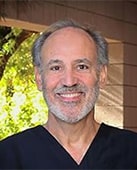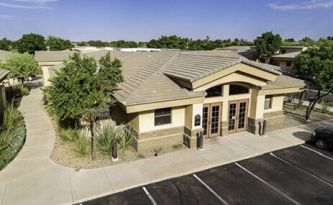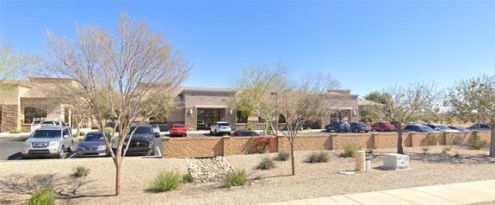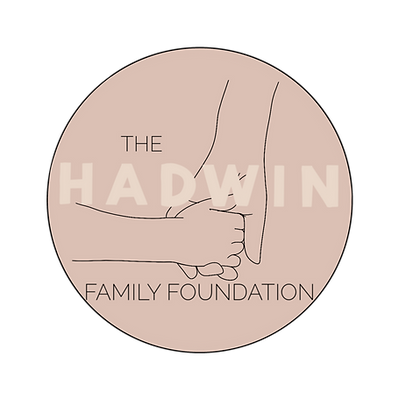The History of ACFS
Published: 12/10/2015
By Jay S. Nemiro, M.D.

The history of Arizona Center for Fertility Studies has much more humble beginnings, but since its inception, Arizona Center for Fertility Studies has been grounded in deep respect and understanding for what the infertile couple must be going through.
By the end of my second year of residency in Obstetrics and Gynecology in Washington, D.C., I was starting to have the nagging and unsettling thought that Ob/Gyn was not where I was to make a difference. Although I still loved delivering babies and doing complicated gynecologic surgery, I knew then that my path was in a different direction.
I did not, however, have any idea what that direction was. I remember sitting at my desk one bleak October afternoon, wondering what was I to do with my life and thinking "everything has a purpose;" but for the life of me, I could not figure out my purpose.
A short time later, Georgetown announced that they were getting a new chairman in the Department of Obstetrics and Gynecology and that he wanted to start a fellowship in reproductive endocrinology and infertility (REI). At that very moment, I knew that REI was where I was destined to make a difference. As a second-year resident, I had assisted on numerous microsurgical cases, but it had never occurred to me that I wouldn’t be delivering babies.
I immediately set up an interview with the new chairman at Georgetown, and though I had no idea what my competition was for that one position, I became Georgetown's first fellow in REI. I was the first resident in 10 years to do a fellowship because, in those days, everybody went into private practice after the completion of their residency.
That was 1980. Remember, the first In-Vitro Fertilization (IVF) baby born in the world was in 1978, and not until 1981 in the U.S. Although my professors were aware of IVF and other reproductive technologies, I received no formal training. Who could perceive IVF would have such a tremendous impact on women's health? I did, however, receive excellent training in reproductive endocrinology on how hormone disorders result in the inability to conceive. Also, since Georgetown had a very busy surgery service, I was trained and able to do a tremendous amount of laparoscopic procedures, fibroid surgery, and microsurgical reversals of female sterilization; something more recently trained REI fellows do not get much of, and some, unfortunately, do not get any experience with.
I was also fortunate that one of my professors was associated with the National Institutes of Health and had worked with a professor who was considered a pioneer in male infertility. As a result, we had a male infertility clinic once a week and saw male patients referred from all over the East coast.
Even back then, surgery for a varicocele was shown to have little statistical success. I even remember my boss wanted me to attend a conference one Friday afternoon on a new surgical procedure that was becoming popular. Reluctantly, I went. Who would have known that new technology was Hysteroscopy? I was so impressed with it that I convinced him that we should do it on all patients that undergo diagnostic laparoscopy to better evaluate the uterine cavity for pathology.
During my fellowship, Georgetown (and more specifically, our program) was picked as one of four clinics in the United States to demo real-time transvaginal ultrasound. Although the machine broke in less than a year, I appreciated the importance of vaginal ultrasound, and when I finished my fellowship, I was asked to do some of the early work for one of the few U.S. ultrasound companies.
During my training, I received an extensive amount of experience with both oral and injectable medications for the induction of ovulation; and although my boss made me do all the patient's injections, I was quick to realize that it was a poor use of my time and the patients to have to drive to the clinic every day. As soon as I was in practice, I decided that the patient or the patient's partner would be an excellent shot giver.
Those days were exciting times. Although much of the disorders of reproductive endocrinology were understood, the advances and breakthroughs in reproductive medicine were in their infancy and a wide-open field for learning and development.
My time as an REI fellow flew by, and before I knew it, I was having to decide where to practice. My dream was to practice in southern California, but with one child and plans for more, housing costs were prohibitive then as they are now. I applied for the chairmanship of a residency program in Stockton, California, but was beaten out by someone with 10 years of administrative experience. Probably lucky for me. San Bernardino?
The chairman at Georgetown knew the program director of the board approved residency program in OB/GYN at the Good Samaritan Hospital in Phoenix, Arizona, and learned that he wanted to start a division in REI and needed someone to head it up as director. One of the things I remember most about that first visit to Phoenix was that everyone was polite and laid back compared to the intensity of the east coast. I interviewed with the program director and was offered the position. My family moved to Arizona in 1982 and I continued in that position, as director of REI, for almost 15 years, training scores of OB/GYN residents in the fundamentals of reproductive medicine.
When I first arrived in Phoenix, in addition to teaching full time, I started a private practice. I was confident in my training and experience with reproductive disorders and microsurgery but sensed that IVF and its associated reproductive technologies were the waves of the future. Since I, or anyone in the country for that matter, had little to no experience in reproductive technologies, and especially IVF, I thought that it was paramount to work with someone that did.
At that time, a few reproductive biologists had the most experience, although admittedly, it was in animal research. From the beginning, I had decided to set up an IVF program but felt that it was critical to work with a Ph.D. who had that experience. As luck had it, there was a professor at ASU who had done a lot of the original work on the pig egg where much of the human data came from for that first successful IVF pregnancy in 1978.
I met Dr. Robert McGaughey, Ph.D. in 1983, and the rest, we can say, is history. Bob and I hit it off immediately; and although we would grow to trust and respect each other's skills and knowledge immensely over the following years, he had "all the experience," and I had none.
The responsible thing was for me to get as much clinical training as possible before we started, but there were very few physicians in the country that had been doing this and had the expertise I needed. One of Dr. McGaughey's colleagues was doing work with a physician in Colorado and, there was a doctor in California who had been doing IVF for a year or so. I trained with both of them.
Armed with the most experience I could find, we started our program in 1983. At that time, the best success with IVF was around 5+%, and patients would lay there for 36 hours after an embryo transfer. Crazy, huh? From the beginning, Bob brought an unprecedented amount of experience to the program and our early success was, in large part, due to his expertise.
After a year or so of doing IVF, and quite honestly, being a bit dissatisfied with our success rates, we looked for other ways of improving that success. I had read about a technology in baboons where eggs were recovered from the abdomen through an open incision, immediately mixed with sperm, and returned to the fallopian tubes during the surgery. It sounded like a good idea, and it would return the eggs and sperm to their "natural environment" as opposed to the artificial culture environment of the petri dish.
As we were starting to do this, a clinic in California reported in The Lancet medical journal the first successful pregnancy in humans using an open incision and called it GIFT or gamete intrafallopian transfer. Although at the time we had done many more cases than that clinic and were waiting to report until we had done a statistically higher number of procedures, like Avis, we were second. Probably better: being first is not all it is cracked up to be.
Our procedure, which we called Low Tubal Transfer, was considerably different, however, because unlike the animal and now human procedures done by an open incision or laparotomy, we did all of our procedures, including the very first, by laparoscopy. Therefore, the patient did not require major surgery, and there was basically no healing time. I think that this contributed to our early success rates of nearly 20%, the best in the country at the time, especially at a time when IVF was only 5+% successful.
Dr. McGaughey and I continued to work together as partners for 24 years. During that time, we had many breakthroughs, reported on the first set of quadruplets born in the world by tubal transfer, published and presented numerous papers and articles on reproductive medicine, reported on the early use of progesterone supplementation in IVF technology, and probably have as much or more experience than anyone in the world with the GIFT and ZIFT procedure.
Like GIFT, ZIFT is a surgical procedure where rather than eggs and sperm immediately placed back in the fallopian tube, less than 24-hour old embryos are placed back into their "natural environment."
From the mid-1980's through the 90's, our success with GIFT and ZIFT consistently outperformed the national success rates with IVF and, as a result, our patients have been blessed with thousands of healthy babies. It was not until the turn of the twentieth century that technology, culture mediums, and advances in IVF caught up to the "natural environment" of the fallopian tube, that we felt that we no longer had to do tubal transfers. Statistics show, however, that when IVF has been unsuccessful three or more times, tubal transfer (ZIFT) is the treatment of choice. I wonder why?
Dr. McGaughey is no longer our "hands-on" embryologist or laboratory director but has contributed an unparalleled level of understanding, commitment, and experience of reproductive science to our program and the success of our patients for years.
Although science has come a long way from those early days of Egyptian medicine, there is still much to learn, and with continued advances in reproductive medicine, genetics, and stem cell technology, the diagnosis, treatment, and success of infertility may one day be as easy as fixing a broken bone or removing an inflamed appendix.











